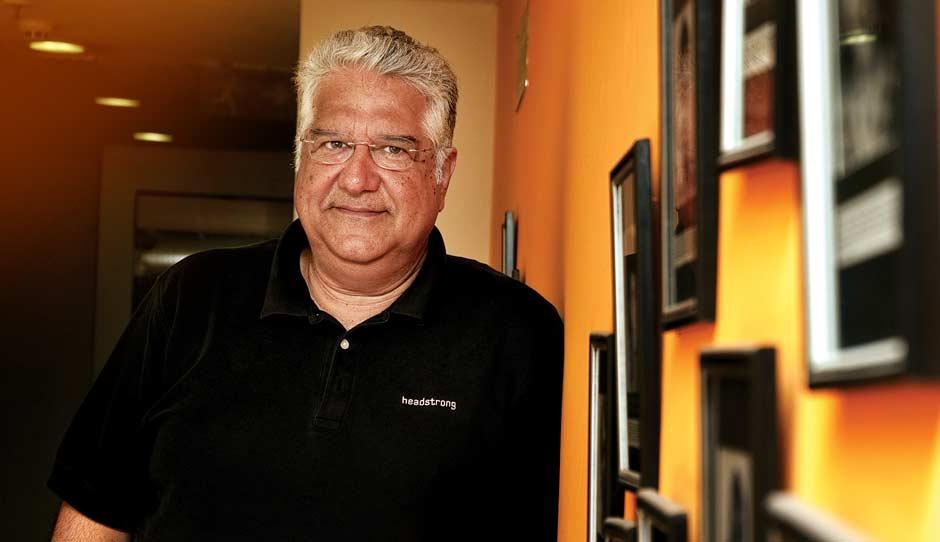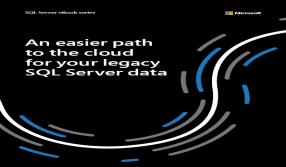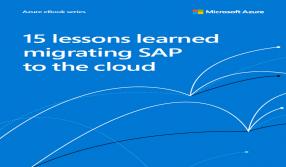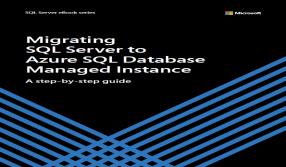Why I Bought and Sold Headstrong
- BY MYB
 In Aspire & Lead
In Aspire & Lead 30307
30307 0
0

Arjun Malhotra didn’t sell for bags of money, or for the thrill of having a giant like Genpact acquire Headstrong. For him, it’s about taking a decision and seeing where it leads him.
I am someone who takes up a project only if it excites me. Else, I don’t bother. This was why I started TechSpan, a systems integration and consulting firm, in 1998. It was a very different venture from Hindustan Computers Limited (HCL) which I co-founded with Shiv Nadar and others in 1975. Had HCL continued to be a private firm, I would’ve still been there—taking risks and following my gut. That’s what an entrepreneur does. However, since public money was pooled into HCL, we had to tread carefully—especially, when the world wide web entered the picture. Every decision was slept over and ideas were double checked. It made sense from the company’s point of view but it didn’t work for me. When I founded HCL, my idea was to build a company, to have economic and intellectual freedom, and to do what one wanted to do.
So, after 23 years with HCL, I left. Pretty much around the same time, Goldman Sachs got in touch with me. They wanted to invest in the Indian services sector and were looking for someone who could do industry due diligence. As their consultant, my job was to find them a firm worth investing in. Soon, it became clear that they wanted a squeaky clean company—with smooth processes, efficient structures and no skeletons in the boardroom, so to speak. That was frankly an impossible prospect.
I suggested we start a company and keep it squeaky clean. Goldman Sachs agreed. And I went out looking for people who could work with the firm. I knew of a few people who had left HCL and started on their own in Virginia, I contacted them and asked them to come up with a business plan. The two investing parties—Goldman Sachs and Walden International—along with the other founders felt I’d do a good job of running the company.
In 1998, Sandeep Sahai, Aloke Paskar, Puneet Pushkarna, Nicki Mehra, Harsh Lohit, Bonnie Singh, Curt Terwilliger—a network of friends, really—and I founded TechSpan. We originally focused exclusively on consulting with extra emphasis on “value addition”. But, our plans didn’t work out. One, attracting the right people, who could go up the value chain, was difficult. We did not have a brand in the US. How could we attract, say, a partner from Accenture to join us? Also, there was an immense pull from the market to go into e-commerce. We steered ourselves that way and it was a good direction for us. Our first year’s revenue of $15 million quickly grew to $67 million in 2000.
I knew merely surviving wouldn’t be enough. We had to use the slowdown to our advantage." - Arjun Malhotra, chairman of the board, Headstrong.
In early 2001, the internet bubble burst. Luckily for us, we had sufficient reserves and managed the crisis. It also helped that we were an Indian firm used to working with resource constraints. We kept our costs under control and stayed cash neutral throughout the slowdown. Nine months into the recession, I knew merely surviving wouldn’t be enough. We had to use the slowdown to our advantage. If there was ever an opportunity to make TechSpan stand out, it was now. It was also better than doing nothing but waiting for the recession to be over.
In early 2002, we initiated a somewhat strange programme called “Asset Light” in New York. As really talented people were being laid off from top-tier investment banks, we were inviting them to join us. However, we could afford only those who were the best. We made potential employees attend a pre-sales call. If they converted the client or business for us, TechSpan recruited them. Through this time—from pre-sales calls to bagging business—the candidates weren’t on our payrolls. This worked out brilliantly. People got jobs. We brought in great talent which helped us build our domain expertise in capital markets and differentiated us from others.
Meanwhile, interesting things were happening in India too. Dresdner Kleinwort Wasserstein (DrKW), an European investment bank, decided to close down their Asian offices. They had a very powerful development group in Bengaluru, WebTek, which had become an expert in how investment banks worked. We jumped at the opportunity to get people with that expertise. We did a soft acquisition of WebTek in September 2002—took over their rental lease when it expired, gave people continuity in salary, and bought over the equipment.
We spent half-a-million dollars on this, pretty much emptying half our bank account. However, this was critical to our growth. It gave us a domain command of investment banking and made us unique, even when we were pitted against an Accenture and IBM. We were no longer speaking to the IT guys on the client side. We were talking to business heads, giving them important, IT-based solutions to solve business problems. This was a critical differentiator.
By March 2003, we were cash positive. However, we needed investments to expand. Again, exciting things were in store for us. Around that time, we were in talks with Headstrong, a US-based business consulting firm that provided IT services and consulting for segments such as asset management, derivatives, wealth management and prime brokerage. They wanted us to set-up a back-end office for them on a build, operate and transfer (BOT) basis. Because this would be mission critical for them, they wanted to own 10 per cent of TechSpan, essentially to have control over the project. Since BOT was a huge opportunity, we agreed. We wanted to have a cross holding in Headstrong as well. When we began working on the integration, we realised Headstrong wasn’t in such great shape. Their private equity investors were even thinking of throwing in the towel. I spoke to Headstrong to see if they’d let us roll in with an investment. It made sense for Headstrong to let us come in and they saw that quickly. We merged through a combination of cash and stock. We got $60 million and they got a new business plan. They were double our size but we led the deal and ended up running the combined company. It was an interesting reverse merger. We took on Headstrong’s brand name since they were known in the US where most of our clients were.
The merger happened in October 2003. It really was the next logical step for us, and the easiest way to come into cash. It changed our level of operation also. Headstrong had a very strong consulting background. We got a fully loaded consulting base and were able to take that, add people and make it a vertical focus.
Post the merger, the original plan was that I’d be the Chairman of Headstrong, relocate to India, and take care of the delivery from either Noida or Manila (Philippines) office. I wanted to make the delivery processes seamless. The way I saw it then was that I’d spend a few years to get the transition and delivery sorted, and then become a redundant member on the board. In fact, I wanted to retire after the merger, the second time I thought of doing so. Retirement was on my mind after I’d left HCL as well.
But, in January 2004, the board called to say that the then CEO wasn’t up to the task of running Headstrong. He’d been hired essentially to downsize the team. In fact, at the office, if anybody spent time alone in his office, more often than not, they’d come out with a pink slip in their hand. The board didn’t want this atmosphere to continue, especially with a growth merger. They asked me to take over. I was given two options—either to take up the role for three months till they found somebody else, or commit to a two-year tenure. I remember vividly that I was stuck in a snowstorm when I got that call. I didn’t think it’d be good for the company to change the top management team so often. So, I decided to run it for two years, at least.
It was tougher than I’d thought. It took us time to integrate culturally. Even with the transition though, we managed to bring in some much-needed revenue. The company grew from $26 million revenue in 2004 to $56 million in 2005. We’ve grown consistently since then. In 2010, we brought in $217 million in revenue.
Even though we were doing well, a buy-out was always on the cards. The only way a financial services firm can grow is through mergers and acquisitions. Also, no matter how well a company does, it sooner or later reaches an inflection point. Our private equity firm Welsh, Carson, Anderson & Stowe (WCAS), has supported us for 11 years now, and did not want to exit. By 2007, we had reached a point where we needed more funds to grow a lot quicker. With the global recession after 2008, landing a good deal wasn’t likely. Still, over these years, we’ve had discussions on being acquired. Things didn’t fall into place till now. With Pramod Bhasin at the helm, Genpact India, a leader in business process and technology management, seemed the right move forward. In May 2011, Genpact acquired us for $550 million.
With this growth acquisition, Genpact gets access to important domain and technical know-how in the capital markets and is better placed to expand its operations in the US. Genpact already has Wachovia, Wells Fargo and GE Capital as clients. Now, they gain our marquee clients—Morgan Stanley and Goldman Sachs. Genpact has now turned into a full-fledged financial IT services provider.
Actually, we’ve worked out a double bubble—both companies benefit from this deal. Headstrong’s CEO Sandeep Sahai and his management team will lead Genpact’s capital markets industry vertical. He took over in 2008 when I turned 60. As for me, I hope that I actually get to retire this time around. No one believes that I will though. Who knows, maybe another start-up before I hang up my boots?
TechSpan to Headstrong: A Tale of Twists and Turns
1970: Malhotra joined Delhi Clothes Mills as a senior management trainee.
1975: Co-founded Hindustan Computers Limited (HCL) with Shiv Nadar, Subhash Arora, Yogesh Vaidya, Ajai Chowdhry and D. S. Puri.
March 1998: Left HCL and worked as a consultant for Goldman Sachs.
1998: TechSpan was founded with a focus on three verticals—telecom, financial, and ERP. Funded by Goldman Sachs.
1999-2000: TechSpan entered the e-Commerce industry and earned $67 million in one year.
Early 2002: Launched a programme called Asset Light to recruit top-notch talent on Wall Street.
September 2002: Acquired WebTek, a Bengaluru-based development company with expertise in investment banks.
October 2003: Merged with Headstrong in a cash-stock swap merger worth $60 million. Retained the Headstrong brand name.
January 2004: Arjun Malhotra is appointed as the Chairman and CEO.
2005: Touched revenue of $56 million, up from $26 million in 2004.
2008: At 60 years, Malhotra steps down as CEO but continues to be the Chairman of the Board. Sandeep Sahai takes over as the CEO.
2010: Headstrong brings in $217 million in revenue.
2011: Genpact India, a process and technology management firm, buys Headstrong for $550 million.





























Add new comment